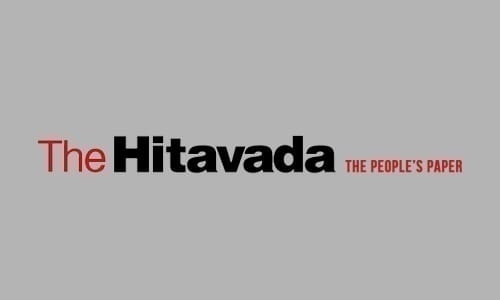Abolish Nuclear Weapons
| Date :03-Aug-2023 |

By Dr Arun Mitra
AS THE 78th anniversary of the atomic bombing of Hiroshima and Nagasaki on 6th and 9th August 1945 is coming near, we are once again reminded of dreadful effects of the incident that wiped out two cities, killed over 2 lakh people and left the mankind to suffer from effects of radiations for several decades to come. How the bodies melted in a fraction of second is beyond imagination. Those who survived envied the dead. They suffered both physical and mental trauma. It was horrifying to watch the images of effects of the atomic bombing during our visit to the Peace Museum in Hiroshima.
Second World War had almost ended and it was imminent that Japan would not be able to sustain for more than a few weeks. There was no justification in using such weapons of mass destruction. But the US wanted to tell to the world that they were the most powerful. A secret Manhattan project was launched to make a powerful weapon.
Modern science by then had given ample knowledge about the energy produced as a result of fission reaction. On July 16, 1945, at 5:29:45 am the first atomic bomb exploded at the Trinity test site in the desert of New Mexico. Robert Julio Oppenheimer was the physicist behind this nuclear explosion.
‘The explosion resulted in an unprecedented release of energy - the equivalent of 20,000 tonnes of TNT exploding in less than 10 seconds. Even though the bomb was detonated from the top of a 30- meter steel tower, the blast created a crater over 2 meters deep and 40 meters wide. And all around the crater the ground was covered with a material never seen before’.
Oppenheimer watched from afar as the first atomic bomb was successfully detonated. The impact was more than any one’s guess. Oppenheimer developed the bomb, but its further use was not under his decision making. He was a scientist, who had no control over the application of the bomb. That is why, as shown in a recent film on him, he later remarked that the explosion brought to his mind words from the Hindu scripture Bhagavad Gita: “Now I am become Death, the destroyer of worlds”. This is a lesson for the scientists that they should not venture over such things which could have harmful applications.
It had become clear that this weapon of mass destruction would add to the arms race. Soviet Union conducted it first nuclear weapon test at Semipalatinsk on 29th August 1949. A new study on the radiation impact of first nuclear explosion, says that the radiations reached 46 States, Canada and Mexico within 10 days of detonation.
At present we have 9 nuclear weapons possessing countries. There are several more countries who have the potential to develop such a device. Total number of nuclear warheads present on earth is estimated to be 13,000.
The world is however now much more informed about the twin existential threat due to climate change and nuclear weapons. A landmark report, Nuclear Famine (2022), published by International Physicians for the Prevention of Nuclear War (IPPNW) summarises the latest scientific work which shows that a so-called “limited” or “regional” nuclear war would be neither limited nor regional. ‘A war that detonated less than 1/20th of the world’s nuclear weapons, would still crash the climate, the global food supply chains, and likely public order. Famines and unrest would kill hundreds of millions, perhaps even billions. Using less than 3% of the world’s nuclear weapons, a nuclear war between India and Pakistan could kill up to every 3rd person on earth, with average global temperatures dropping about 1.3 degrees Celsius. A full-scale nuclear war between the United States and Russia would kill an estimated 5 billion people worldwide within two years’. This could be an end to the modern civilisation built through thousands years of human labour.
It is time that the mankind has to unite to not let the events take a shape to a catastrophe. That nuclear weapons serve as deterrence is a myth which needs to be broken. Even if the countries decide not to use these weapons, any technology issue could play havoc. Moreover the expenditure on their production, putting them on alert and their maintenance is costing our resources which could have otherwise been used for health, education and other social needs. It is not wise to see the damage done and then cry over it later. Prevention is always a better way.
There are several movements around the globe working at international level as well as national level. Medical professionals have united under the banner of IPPNW to tell to the world about the health impacts of nuclear weapons. All these movements have one common goal, to make the world free of nuclear weapons! Treaty on the Prohibition of Nuclear Weapons (TPNW) is the hope to be fulfilled collectively. India has been harbinger of peace movement under the banner of Non Aligned Movement (NAM). Time is again to show the statesmanship. (IPA)